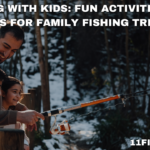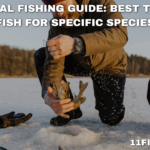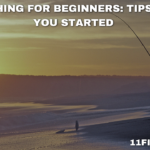Whether you’re a seasoned angler or just starting out, selecting the right fishing reel can greatly improve your fishing experience. Reels are an essential part of your gear, and choosing the correct one depends on the type of fishing you plan to do. Understanding the different types of fishing reels is the first step in mastering the art of angling.

Types of Fishing Reels
There are three primary types of reels to consider: the baitcasting reel, the fly fishing reel, and the spinning reel. Each of these reels serves a specific purpose and is suited to different styles of fishing.
1. The Baitcasting Reel
Baitcasting reels are best suited for more experienced anglers. They work by using the weight of the lure to pull the line off the spool during the cast. As the reel is released, the line is cast forward, and the spool rotates to let out the line.
- Advantages: Baitcasting reels offer greater precision and can handle heavier lures and larger fish, making them ideal for bass or deep-sea fishing.
- Challenges: They require more skill to use effectively. If the reel isn’t properly controlled, the line can become tangled, causing “backlash.” This is why proper technique is important for smooth operation.
2. The Fly Fishing Reel
Fly fishing reels are designed specifically for the sport of fly fishing. These reels are built to handle the delicate casting of lightweight flies. One of the most important features of a fly reel is the drag system, which must be responsive to handle the tension of a large fish.
- Advantages: The drag system allows anglers to fight larger fish without the risk of the line snapping. Fly fishing reels tend to be more expensive due to their specialized design and the materials used (many are all-metal, which is preferred for durability).
- What to Look For: Choose a reel with no plastic parts, as these can break easily under stress. All-metal reels are more reliable and worth the investment.
3. The Spinning Reel
Spinning reels are perhaps the most beginner-friendly of the three options. There are two main types of spinning reels: closed-face and open-face reels.
- Closed-Face Spinning Reel: This type is inexpensive and easy to control, making it ideal for beginners. It has a push-button release that simplifies casting and is a good choice for smaller fish like panfish.
- Open-Face Spinning Reel: This version is a bit more challenging to use but offers more versatility. It comes in various sizes, with larger models designed for game fish or ocean fishing. Open-faced reels are excellent for trout, salmon, and larger fish due to their increased line capacity and smooth drag system.
Choosing the Right Reel
When choosing a reel, several factors come into play:
- Reel Speed: Opt for a medium-speed reel if you only plan to buy one. If you need more variety, consider both a low-speed and a high-speed reel for different types of fishing.
- Handedness: Make sure the reel matches your dominant hand. Most reels are designed for right-handed or left-handed use, so check before purchasing.
- Line and Reel Compatibility: The size of the reel is directly tied to the weight of the fishing line. Lighter lines require smaller reels, while heavier lines need larger reels. Ensure the line and reel are well-matched for your fishing needs.
Get Expert Advice
Choosing the right fishing reel can be overwhelming, especially if you’re new to angling. If you’re unsure, the knowledgeable staff at a fishing tackle shop can offer helpful advice. They can guide you based on your experience level, the type of fishing you’re doing, and even your budget.
Conclusion
No matter your experience level, the right fishing reel can elevate your fishing game. Whether you’re casting with a baitcasting reel, patiently waiting for a big catch with a fly reel, or perfecting your technique with a spinning reel, understanding the basics will make your fishing trips more enjoyable and successful.









